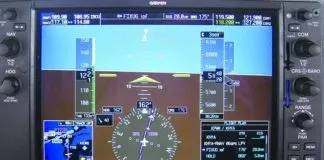The whole world seems giddy about electric propulsion, and that’s good. But good things must be moderated against practicality.
I first bought a hybrid electric car in 2006 that I’ve just replaced with a plug-in hybrid electric car. The technology is amazing and gas usage is dramatically shifted to cheaper electricity. Every time I slow down, I’m putting energy back into the battery to reuse. Thus, even when the car says I can drive 15 miles on the battery, if I’m in stop-and-go traffic, I can usually count on a lot more.
But airplanes? I don’t see it.

There’s all electric, as in a battery powering an electric motor driving a prop, such as the Pipistrel Alpha Electro, which also can put energy back into the battery when it’s “coasting.” Given the often breathtaking price of avgas, and the likely lower maintenance cost of electric propulsion, this technology might find a foothold.
Gas-electric hybrids, like my car, whether externally rechargeable or not, don’t seem practical since there’s not much opportunity to “coast” and recharge them. Nobody has a viable one flying yet.
Portable electronics have spurred amazing battery-technology development. Today we have far higher energy density—how much oomph is stored in a pound of battery—than was even imaginable a few decades ago. Nonetheless, batteries are still heavy, with a pound of fuel packing far more energy than a pound of battery. (Think orders of magnitude.) So, electric range suffers big weight penalties—the death knell of airplane design.
Then, there’s recharging. Even Tesla superchargers deliver (to a car) a few miles of range per minute at their unsustainable maximum. If you’re taking your electric-airplane cross country and stopping to recharge every 400 miles, you’d be on your “quick turn” for energy for a few hours at least. Not practical.
Battery exchange? Only practical at home.
Speaking of 400-mile range, that’s a distant pipe dream for electric airplanes that are struggling to get a couple hours of endurance. The Pipistrel, for example, boasts an hour plus reserves and 85 knots. So, sorry, electric airplanes aren’t practical traveling machines until dramatic things, possibly physically impossible things, improve charge density and recharge (or battery swap) times.
What about regenerative charging? For a traveling machine, the only time you’re coasting and could recharge the battery is on descent. So, yes, the total energy profile is improved, but there’s not much practical benefit since you don’t recharge the battery until you’re landing anyway. So, I’m unable to see where there’d be enough energy savings to justify the increased cost and weight.
…unless, you’re in a trainer, taking lap after lap around the pattern learning to land. Even that up/down, up/down today only slightly benefits from regenerative charging to improve energy efficiency. Finally! We found a niche where electric airplanes might make sense. But, unless you’re a student or an instructor, that still won’t really work for the rest of us. I’m not holding my breath for any kind of electric airplane I’d want.




